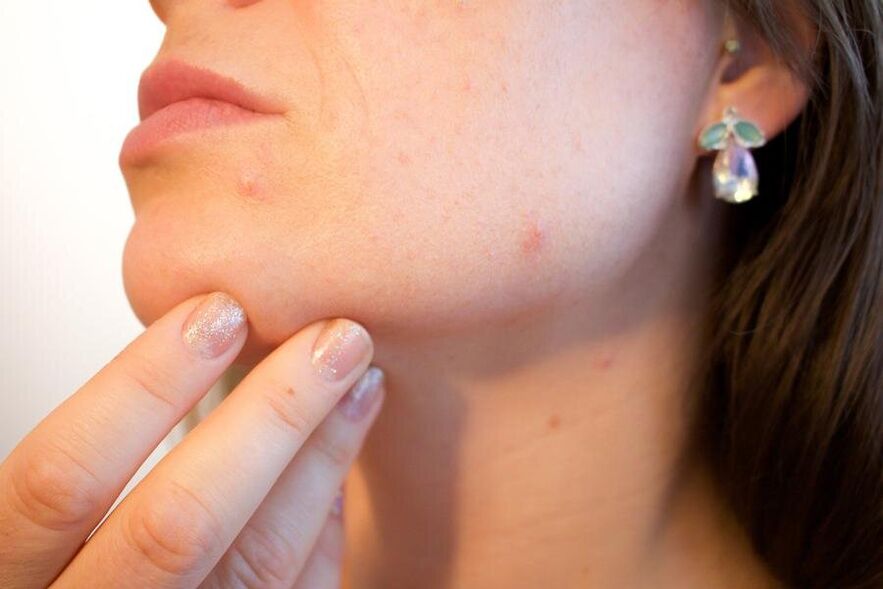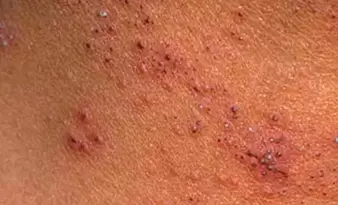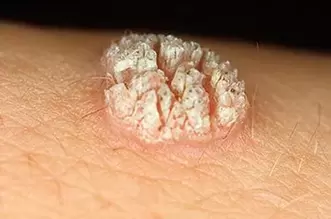For a complete answer to the question, it is necessary to delve into the essence of the penetration of the infection into the human body. Many experts have made many attempts to discover the whole nature of the appearance and development of HPV, which is so well known today. Over the last 30 years, human papillomavirus has been studied very carefully. As a result and in the research process, more than 100 strains of the nature of the disease were discovered. The types of papillomas on the body are not of the same type but malignant or benign.

HPV is a neoplasm that appears on any part of the skin or inner lining. But, unfortunately, some strains after the pathology turn into a malignant tumor. You need to know absolutely everything about these types from "A" to "Z".
Types of skin growths
The appearance of an increase in body skin is indicated by a decrease in the immune system. It is what has a protective function and plays the role of a kind of barrier. When a type of human papillomavirus enters the body, immunity prevents HPV from taking root. This has been proven by research.
Long-term medical practice has made it possible to divide all papillomas on the skin into three types:
- HPV of a non-oncogenic type (such increases will not cause cancer, but will lower immunity).
- The virus is not of the high oncogenic type (has a low threshold for the occurrence of pathology).
- Oncogenic risk infection (due to a high threshold for oncology).
The sign of papillomavirus found on the skin is already, though not great, but disturbing. Do not leave growth unattended (especially in the genital area). For a full understanding of what type caused the appearance of a neoplasia, you should contact a dermatologist. To begin, the doctor will perform a visual examination and, if necessary, write an instruction for further analysis and research.

Do not start self-medication if you do not understand what type of papilloma you have - this can lead to irreparable consequences.
It is important to consult your doctor to prescribe antiviral therapy. Without medical treatment the removal of papillomas can not guarantee a lasting result, as with the next decline in immunity, there is a possibility of papilloma reshaping due to virus activity.
The number of existing neoplasms is in the tens. You need to understand what papillomas are and remember that the whole range of growths presented is divided into five categories. They were divided according to symptoms, color scheme, and oncogenicity risk. We will address each group in more detail later. Thus, the varieties of papillomas are divided into 5 types.
The first type is simple papilloma
Group I - simple papillomas. Another name is common or vulgar growth. This type of papilloma is widespread. A clear sign of the appearance of a small growth on the skin. In the process of developing papillomas of any of the known species, it turns into a dark-colored keratinized tubercle. Common warts are localized on the skin, both in a single form and in whole groups. A favorite spot for moles are the hands (inside and outside of the hand) and the bottom of the face (basically the lips and chin).
It should be noted that there are plantar papillomas, they practically do not differ from vulgar growths, only the keratinized outer shell gives their belonging. Such warts cause discomfort while walking. Removing them is not easy, but it is quite possible at home.
The second type is flat

Group II - flat papillomas. A characteristic feature of the species, the manifestation of a group accumulation of growths. They have virtually no bulge and have a dark color.
The growths are rounded, elongated, oval in shape, rising above the level of the skin by 1-2 millimeters. Flat papillomas are located around the mouth, on the face, in the upper half of the body. Sometimes papillomas form on the neck. Place of distribution - the upper part of the body. In some cases, they have been observed in the genital area. Skin papillomas still belong to this group, and appear mainly in adolescence. Warts are localized on the neck, face and hands of young people. The main reason for the appearance is the failure of the immune system.
There are also papillomas on the labia, cervix in girls, penis in men, in the rectum, near the anus. These formations are arranged in groups, joining each other. Flesh-colored flat papillomas, sometimes slightly darker than the rest of the skin, form under the influence of 10, 49, 28 papillomavirus types.
The third type - pointed
Group III - pointed papillomas on the face and other areas. Another name is warts. The main site of dislocation of neoplasms is the mucosa. Most often, they affect the genitals and body, spoiling its appearance and touching everything from the inside. It is these strains that are classified as oncogenic risk. It is characterized by rapid development from one specimen to several in a short period. The method of penetration of genital warts is sexual intercourse. The presence of pointed moles is not desirable for pregnant women, as there is a possibility of infecting the baby. The latter can occur when the newborn passes through the birth canal.
The fourth type - filiform papilloma
Group IV - characteristic filiform papillomas on the body. In the scientific world they are called chords. A characteristic feature of neoplasms is the binding foot that supports the mole itself. The age category is middle age, and older women and men. Such growths are more often called senile.
Human papillomavirus has developed in the body for many years, and only after a while does it appear as a wart. Place of neoplasm formation: eyelids, neck, armpits, inguinal area and chest area. These growths are traumatic and often, by negligence, detached. This is a very dangerous phenomenon, so it is necessary to show the wound to the doctor.
The fifth type - interior
Group V - internal moles. This subgroup includes all neoplasms that form in the internal organs of the body. These include warts located on the walls of the stomach and rectum. Growth in the mouth and throat, formations in the bladder. It is the presence of condyloma of this group that can not be recognized independently, as this requires special diagnosis. But the presence of growths gives severe symptoms. How dangerous neoplasms are to the human body, it is definitely impossible to say. The research work is carried out every year and constantly gives new results.
But one thing is clear, this fact can not be ignored. For example, an increase in the bladder can lead to internal bleeding, or eventually become carcinogenic. Warts in the larynx impair respiratory function and the ability to speak. By the way, the latter are also able to localize to a newborn - therefore, a pregnant woman should be especially vigilant.
Causes of papillomas
HPV is an infection that, when it enters the human body, causes all kinds of growths. Some types of neoplasms turn into cancerous tumors. We list the most common causes of infection:
- the constant change of sexual partners;
- presence of bad habits (alcohol, smoking, drug addiction);
- decreased immune defense;
- violation of physiological processes in the body;
- negligent attitude towards personal hygiene (use of other people's personal belongings).
General symptoms of all kinds
The most likely manifestation of the presence of HPV in women in the body is the external presence of growths. All characteristic features depend on the location of the neoplasms. Let us examine in more detail the obvious symptoms, depending on the type of papilloma and its types.
- Pointed condyloma. It occurs in the mucosa of the genitals, larynx, oral cavity, inner walls of the stomach and rectum. In the genitals it is accompanied by slight itching and an unpleasant odor. It is undesirable to ignore this type of growths, as oncogenic pathology can lead to catastrophic consequences.
- Intraductal papilloma. The place of origin of the canal in the mammary gland. Characteristic signs of the presence of growth: redness around the nipple, slight itching and burning. With light pressure on the nipple, an icicle or green discharge is released. Breast papilloma is not initially cancerous, but in a neglected state it turns into a malignant tumor.
- Plantar warts. The increases are marked by the presence of a corned corn formation on the sole. When walking, crushing, squeezing causes discomfort. Painful sensations are manifested in a sharp and acute pain in the area of the neoplasm.
- Papilloma in the throat. The initial stage of growth is not characterized by significant symptoms, but in the process of development, the symptoms intensify. The voice changes, there is a coma in the throat, respiratory function is disturbed. Has difficulty swallowing saliva and food.
- Flat warts. They appear in adolescents on the lower part of the face and arms (on the outside of the hand). There are no severe symptoms. Only occasionally is there a slight itching.
Treatment of skin neoplasms
Once you have found an increase in the body, contact a specialist - a dermatologist, so that the latter can prescribe treatment. Do not self-medicate, as some strains are of the high oncogenic type (this applies to both males and females).
HPV (human papillomavirus) with external signs in the form of neoplasms is not all. These growths can easily turn into malignant tumors and this is already dangerous. It should be noted that human papillomavirus remains in the body for the rest of life. As a result, it is only possible to reduce activity, or in other words, introduce the infection into a "dormant" state. But laser therapy will help in the complete disappearance of the mole absolutely without pain.
Pay attention to external changes in the skin and visit doctors at the right time. Take vitamin complexes and support the immune system. Adhere to certain rules and health will be safe. Moreover, the types of papillomas on the face, as already discovered and which photos can be seen online, are different and before you head to the removal, you should find out what the strain is. A description of any can be found on the World Wide Web.























